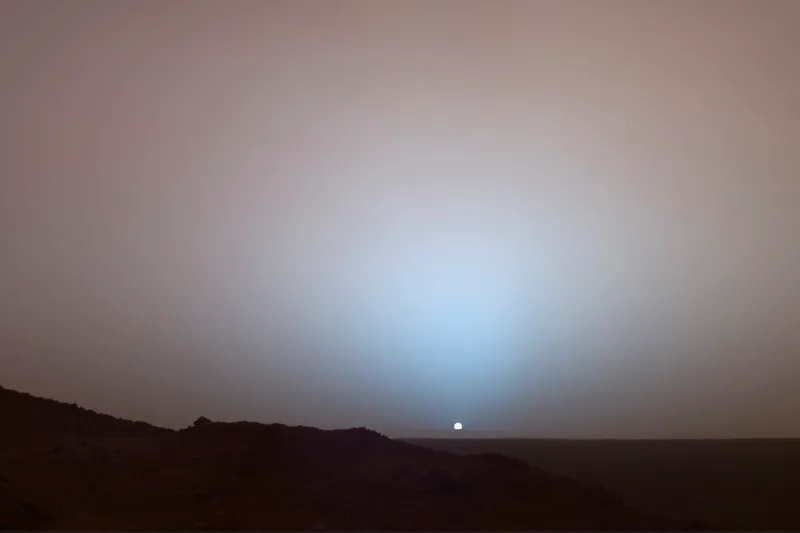The full Moon at the end of August this year is a rare one; it’s a Super Blue Moon. This late-summer spectacle will rise in the evening of Wednesday 30 August 2023, at 8:07pm BST, appearing full both the day before and the day after. It will reach peak illumination at 1:36am in the morning of 31 August.
But where does the 'Blue Moon' name actually come from? And will the Moon actually look blue?
Why is the next Full Moon called a Blue Moon?
The Moon is typically named to keep track of the seasons. For example, September's‘ Harvest Moon’ is so-called because it allowed farmers in times-gone-by to extend their working day and continue gathering crops past sunset. But unlike other months of the year, the origin of the name ‘Blue Moon’ is something quite different.
So why do we call it a blue Moon?
In popular parlance, a Blue Moon is the name given to a second full Moon in a single calendar month. The name is not constrained to a particular month, but it is a relatively rare occurrence, hence the saying “once in a blue moon”.
“While the term ‘Blue Moon’ might have originated from the Moon literally appearing blue in colour, it is now used in the metaphorical sense, and refers to the rare occurrence of seeing the Moon fully illuminated by sunshine – a Full Moon – twice in the same calendar month,” says Dr Darren Baskill, astronomer lecturer at the University of Sussex.
Blue Moons of this sort happen roughly once every two to three years.
But there is also a second definition to a Blue Moon, and this is a ‘seasonal Blue Moon’. This type of blue moon is the third full Moon, in a season with four full Moons, according to NASA. Although for the casual moon-gazer, this definition is not as well-known as the ‘two-moons-in-a-month’.
What influences the colour of the Moon?
The atmosphere that envelops the planet has a huge part to play in how we see the Moon.
Baskill gives us a quick physics lesson to explain: “When light passes through the atmosphere, blue light scatters more than red light. In other words, blue bends best! This is why the sky is blue; blue light from the Sun is scattered all around the sky.
“This effect, what's known as the Rayleigh scattering, also causes the Sun and Moon to appear red when they are low in the sky – their light passes through the thicker part of the atmosphere, amplifying the scattering of blue light away until only the red hues remain,” he says.
And this effect is even more impressive when there are particulates in the atmosphere.
“Dust ejected from a volcanic eruption into the Earth’s atmosphere can be illuminated by this red light, producing dramatic sunsets around the world whenever there is a major eruption,” Baskill explains.
“However, scattering of light only behaves like this when the dust particles in the atmosphere are tiny.”
Could the Moon ever actually appear blue?
Although this particular Super Blue Moon is unlikely to appear blue in colour, there are indeed occasions when the Moon can look physically blue.
“If the dust particles are larger, say a thousandth of a millimetre (a micron) in size, then the opposite can occur, with red light being blocked by the dust particles and only blue light being able to pass through. It is this process that could cause the Moon to actually appear blue in colour,” Baskill says.
“Thanks to our turbulent atmosphere and rain, such larger micron-sized particles only exist in the atmosphere for a few days or weeks, and they only exist in large quantities after very major volcanic eruptions, something that hasn’t been seen in modern times.
“Since large amounts of micron-sized particles in the air are exceedingly rare, so is a blue-coloured Moon – so much so that ‘Blue Moon’ is used as a metaphor for rare events,” he says.
“However, there is a place where there is no rain, where the atmosphere isn’t so thoroughly cleaned, and where we can see objects appearing blue… the planet Mars!
“The Sun does actually appear blue on Mars! Unfortunately, Mars’s moons are a bit too small for a blue (Martian) moon to be clearly seen, as there are no telescopes on the planet.”

So where does the phrase come from?
We’ve been using the term ‘Blue Moon’ for quite a while now, but rather surprisingly, the origins may have been a mistake.
“The phrase ‘Blue Moon’ now typically refers to an occasional second Full Moon occurring in a month. These metaphorical Blue Moons happen once every year or two, and this definition appears to have originated due to a misunderstanding printed in an astronomy magazine in the 1940s!” Baskill says.
So rather like the unofficial term ‘supermoon’, it looks like the term ‘blue moon’ is also here to stay.
About our expert
Dr Darren Baskill is an outreach officer and lecturer in the department of physics and astronomy at the University of Sussex. He previously lectured at the Royal Observatory Greenwich, where he also initiated the annual Astronomy Photographer of the Year competition.
Read more: